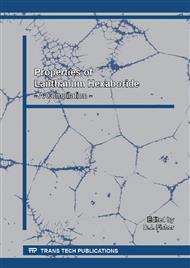p.1
p.9
p.19
p.27
p.37
p.43
p.55
p.71
p.79
The Site Preference of Alloying Element Zr in NiAl Dislocation Core and its Effects on Bond Characters
Abstract:
NiAl is one kind of high-temperature alloys with broad potential applications in aerospace industry. Its mechanical properties are believed to be largely related to the dislocation behavior and impurity-dislocation interaction. In the paper we report first principles study of the alloying effect of Zr in the [10(010) edge dislocation core of NiAl. The binding energy of doping system decreases 3.77 eV when a Zr atom substituted for an Al, only decreases 1.06 eV with substitution for a Ni atom. The result of the binding energy shows that a Zr atom prefers to occupy an Al site in the dislocation core of NiAl. The analyses of the charge distribution, the interatomic energy and the partial density of states suggest that Zr will greatly enhance the interaction between Zr atom and neighboring host atoms, as well as that between host atoms. These results show that the alloying element Zr induced pinning effect on the edge dislocation motion is predicted, and could be helpful for understanding microscopic mechanisms of alloying-induce hardening in NiAl alloy.
Info:
Periodical:
Pages:
19-26
Citation:
Online since:
October 2013
Authors:
Keywords:
Price:
Сopyright:
© 2013 Trans Tech Publications Ltd. All Rights Reserved
Share:
Citation:


